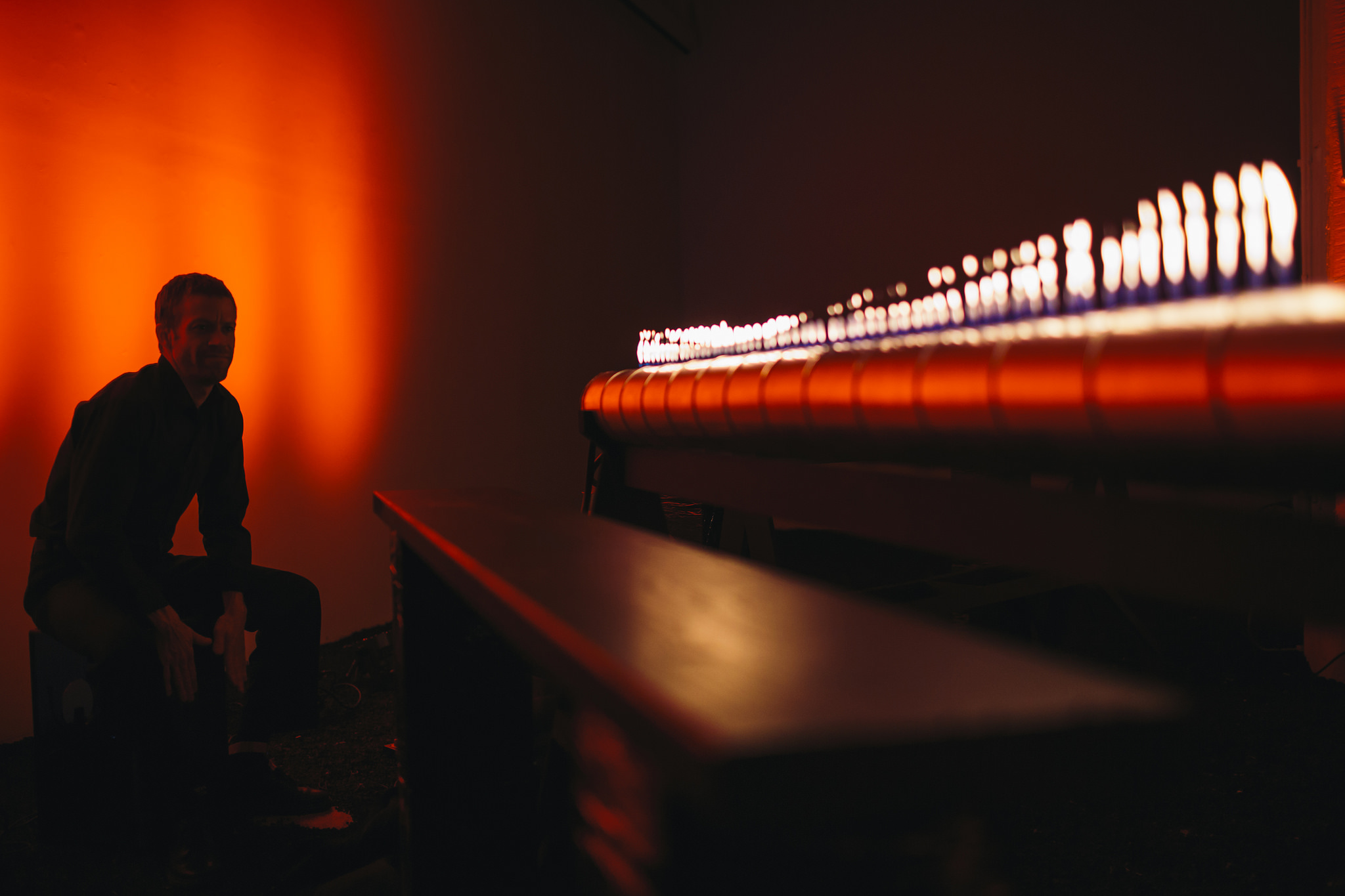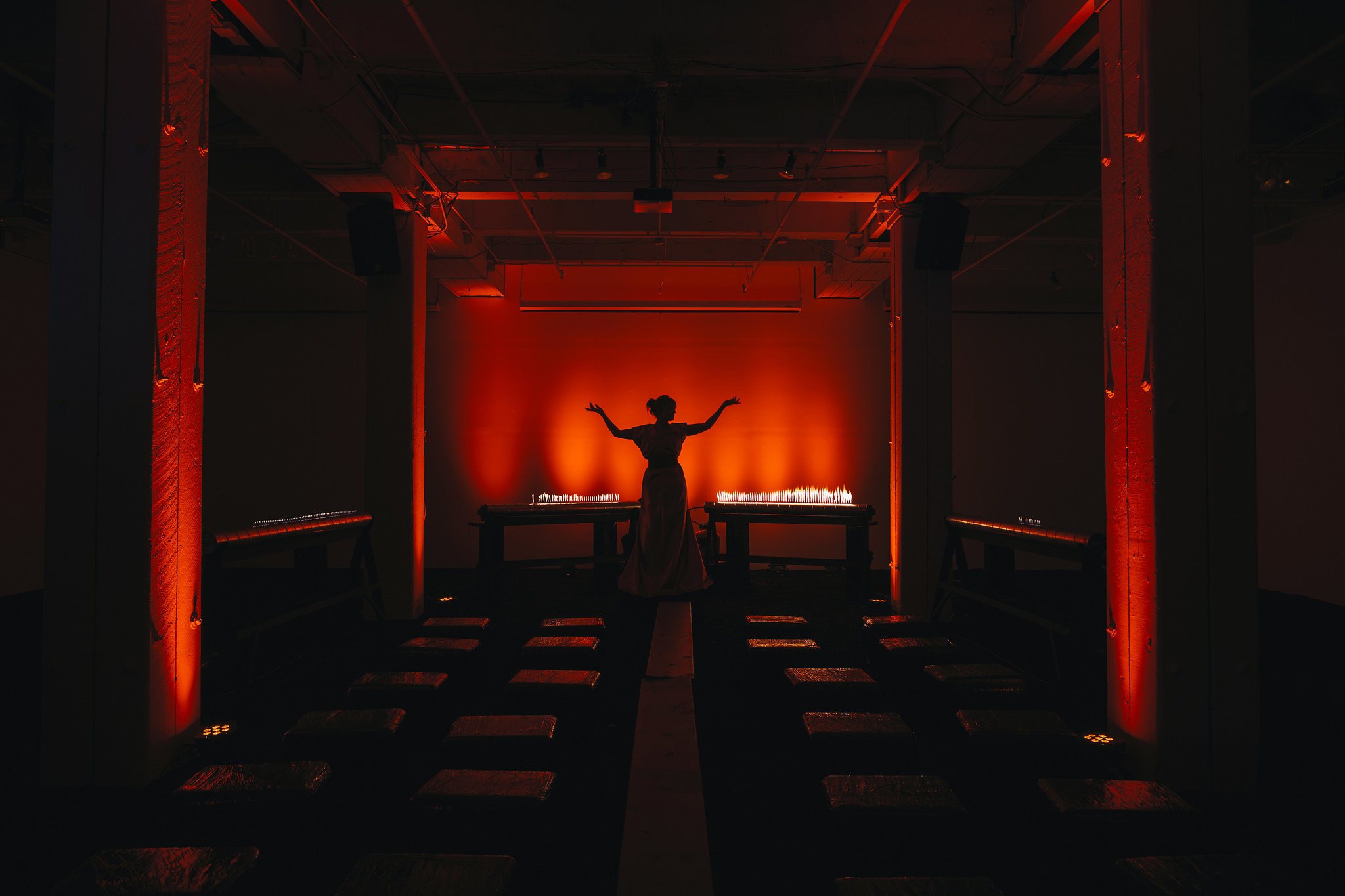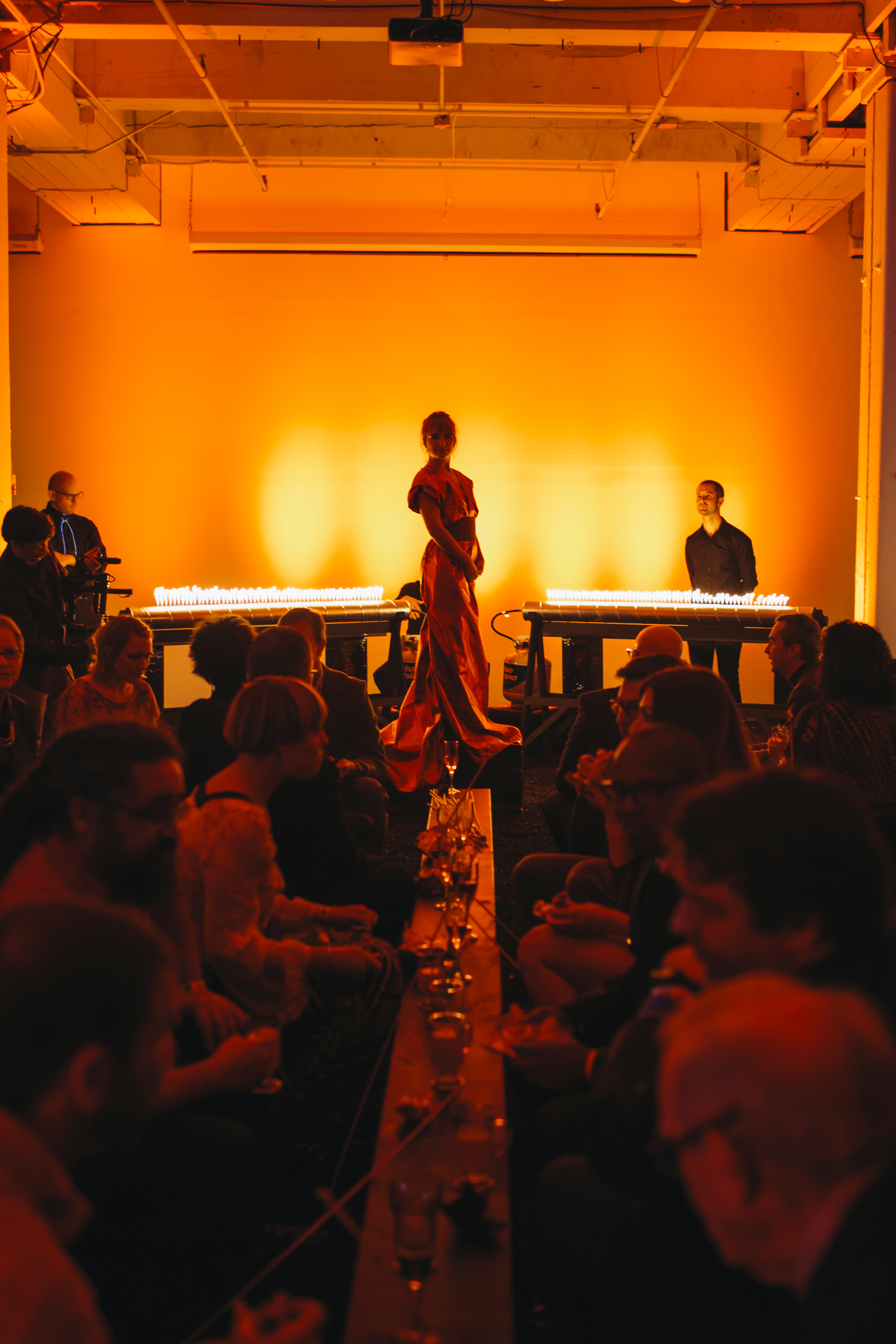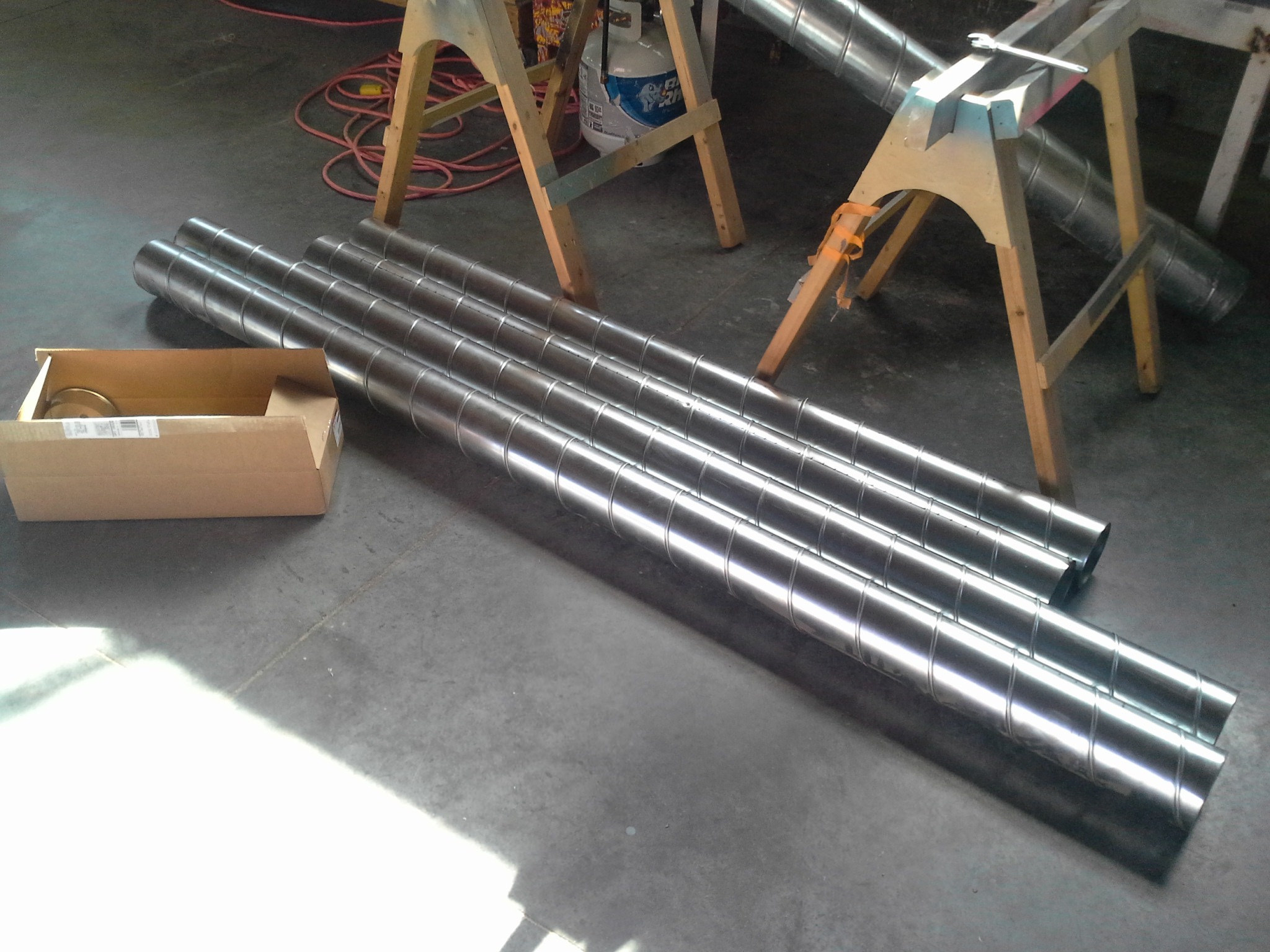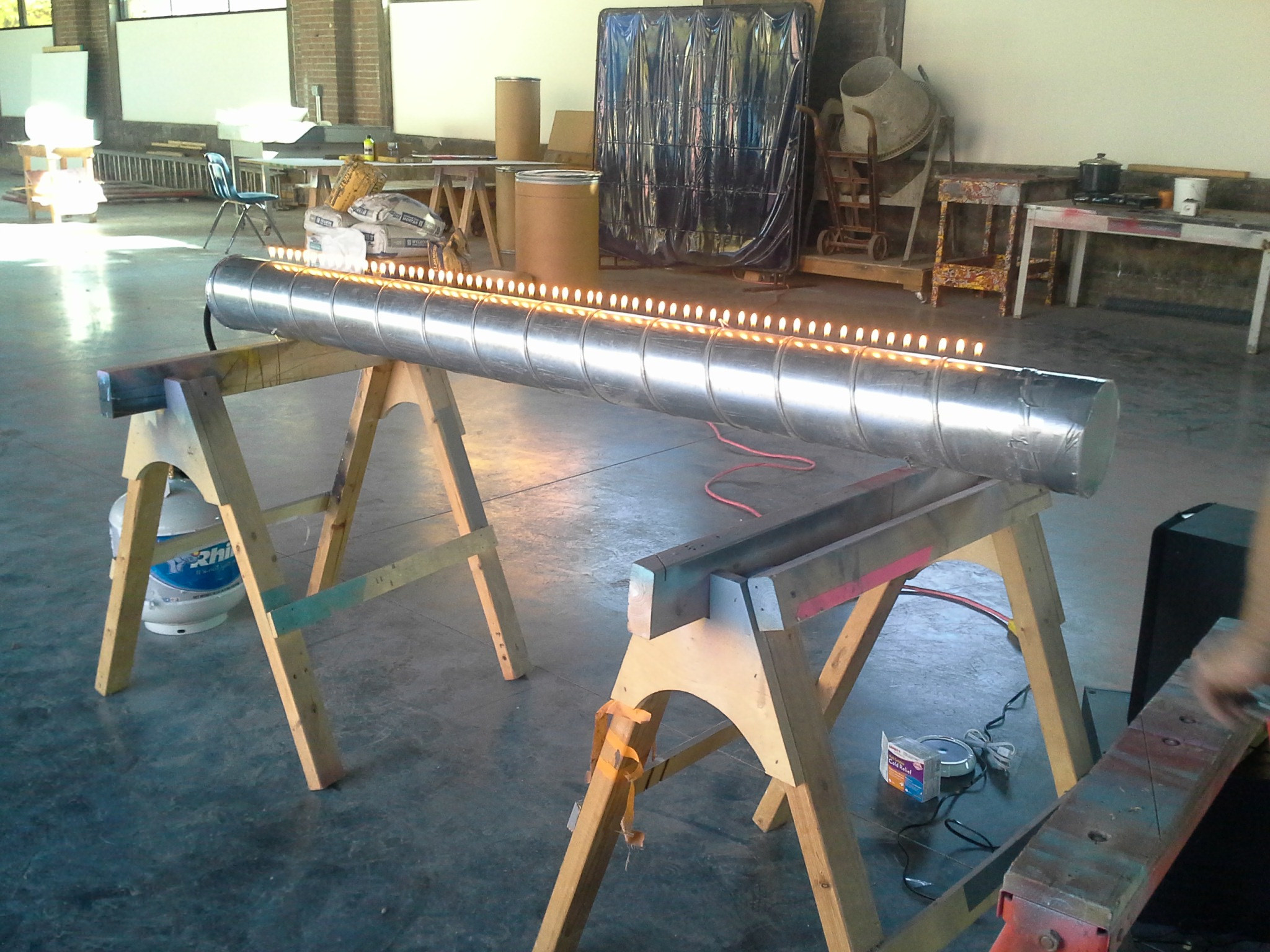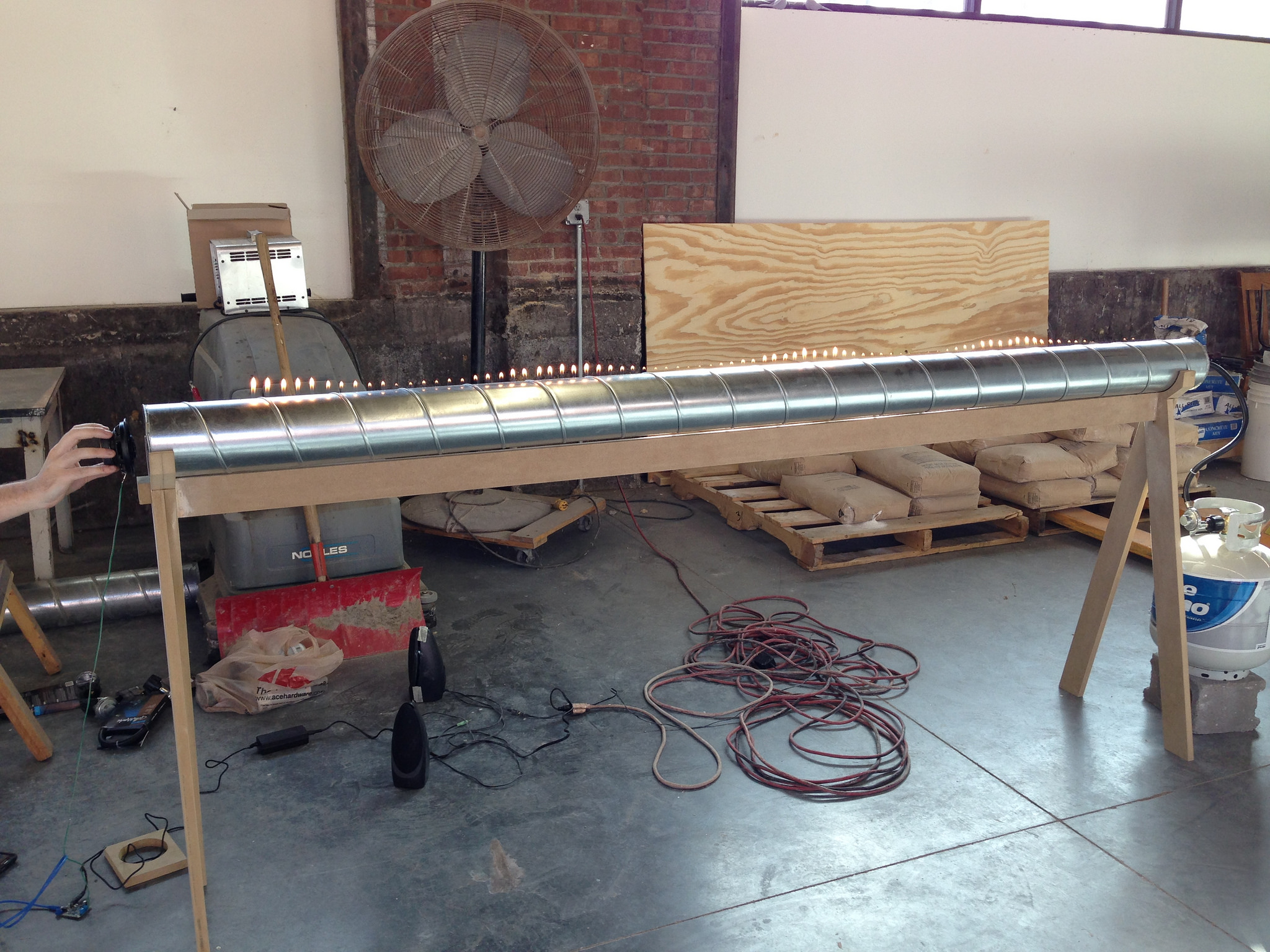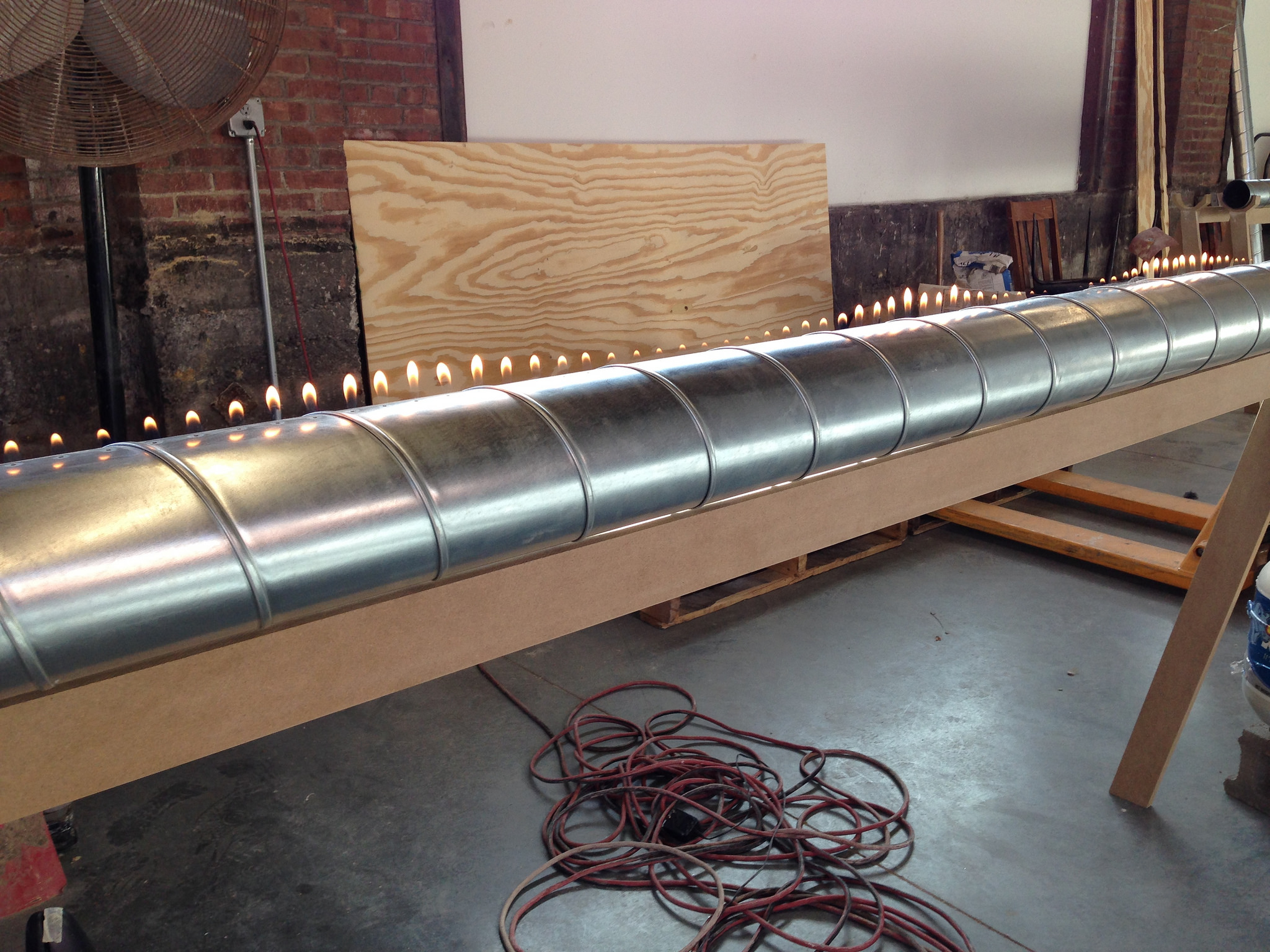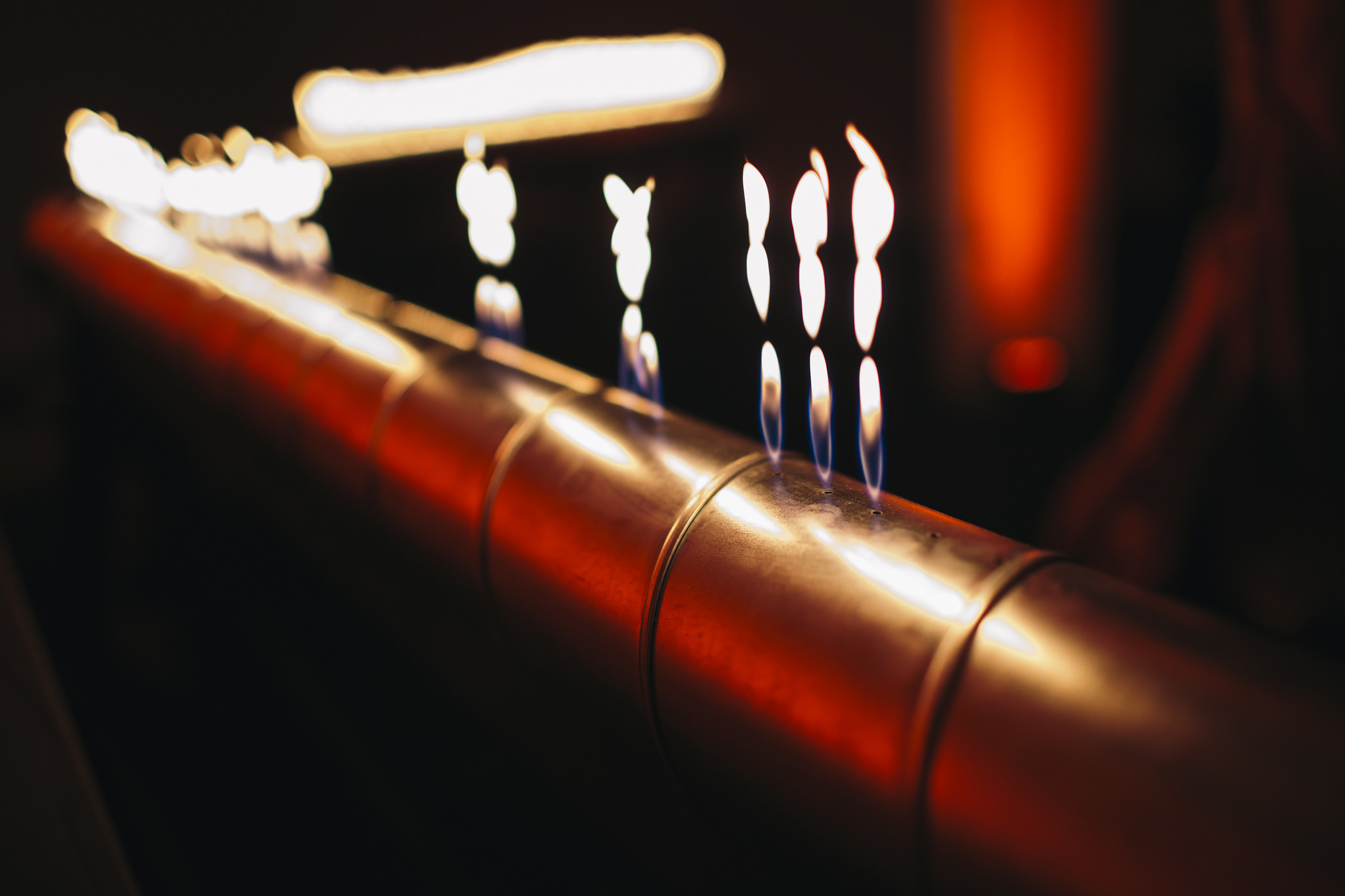
Ruben’s Tubes built for two shows at Bemis Center for Contemporary Art
Throughout October and November I had the opportunity to collaborate with artist Emilie Baltz while she was a resident at the Bemis Center for Contemporary Art here in Omaha. Emilie’s practice involves the creation of fantastic new experiences, often focused on food, culture and the five senses, which she was able to bring together wonderfully by planning and executing two wildly innovative dinner parties for the Omaha community.
For these two shows I was asked to build several systems, including four Ruben’s Tubes controlled with live audio and used by staff to prepare food for guests. These tubes use live, propane-driven flames modulated by a small speaker which vibrates a flexible membrane purely by pushing the nearby air back and forth. As this flexible membrane vibrates with the audio, more or less propane is pulled into the tube and consumed by the flames causing the flames to vary dramatically in height. Due to the physics of the sound waves bouncing around inside the tubes, combining and cancelling in different ways, the individual flames respond differently depending on the frequency of the audio, sometimes creating a two-dimensional graph of the audio waveform!
Circuit of the Senses
The tubes were first used in a well-orchestrated event in which participants were guided through a series of rooms (each focusing on a different sense) and served different types of food in different ways to play on their perception of taste. One such room was the “Sound” room, which included a live drummer (Mark Powers), a live performer (Claudia Bitran) and custom room lighting. Servers used the Ruben’s Tubes to toast marshmallows for guests, intended to be applied to hot dogs.
Though the tubes had small speakers and audio equipment connected to them to make the flames dance, we quickly found out in testing that the sound pressure generated by Mark’s cajon with no electronic amplification was enough to control the flames directly! This meant that the dancing flames were not just responding to a electrical signal, but were being controlled directly by the drummer as though they were a sort of visual musical instrument.
Circus of the Senses
Following the Circuit of the Senses, Emilie and the staff of the Bemis Center created a community party playfully incorporating elements and themes from the previous show. This “Circus” was attended by several hundred people and featured a huge amount of eye-popping, interactive attractions including an aerial performer, human cocktail shakers (dancers on trampolines shaking guests’ drinks by jumping), ice block shot luges and more.
The Ruben’s Tubes made their second appearance at this event and were used to not only visualize the live music (from Dereck Higgins and Mark Powers) but to also prepare skewers of food for guests.
Fabrication
 Creating these Tubes was actually surprisingly straightforward, and can be done using very common components from hardware stores. Following this model published in MAKE Volume 26, we found four lengths of spiraled metal ducting on site and cut them to length (two 6′ and two 8′).
Creating these Tubes was actually surprisingly straightforward, and can be done using very common components from hardware stores. Following this model published in MAKE Volume 26, we found four lengths of spiraled metal ducting on site and cut them to length (two 6′ and two 8′).
 I then drilled 1/16″ holes every 1″ along the ducts, sparing 6″ on each end as per the instructions I had found. The Bemis Center’s Residency Technician (Luke Severson) sealed up one end of each pipe with a rigid cap, outfitted with a propane line fitting, then glued a thin, flexible plastic sheet to the other end.
I then drilled 1/16″ holes every 1″ along the ducts, sparing 6″ on each end as per the instructions I had found. The Bemis Center’s Residency Technician (Luke Severson) sealed up one end of each pipe with a rigid cap, outfitted with a propane line fitting, then glued a thin, flexible plastic sheet to the other end.
Next, Luke fabricated some beautiful wooden frames to hole each of the tubes and accommodate the speakers that would need to be mounted near the flexible end of the Tubes. We quickly learned that the Tubes are extremely sensitive to any kind of wobbling of the frame, causing the flames to almost entirely go out at the slightest nudge. After Luke added some reinforcements to the frame this became much less of an issue though.
 To make each Tube respond to live audio, I installed a small speaker near each of the flexible sheets, along with matching amplifiers and an appropriate power supply onto each wooden frame. This speaker is what causes compression and expansion of the propane/air mixture inside the Tube, forcing more or less fuel through the holes in the Tube, resulting in taller or shorter flames.
To make each Tube respond to live audio, I installed a small speaker near each of the flexible sheets, along with matching amplifiers and an appropriate power supply onto each wooden frame. This speaker is what causes compression and expansion of the propane/air mixture inside the Tube, forcing more or less fuel through the holes in the Tube, resulting in taller or shorter flames.
We were able to test the set up within a couple days of starting the build, and got some great results!
